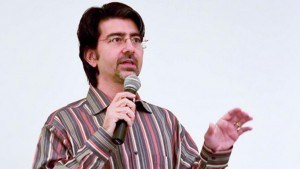By MARISSA YOUNG
The Internet is great for news because we can use it to tell stories in multiple forms, like both text and video. Video can complement and enhance text stories, adding new information and content. However, a problem I have been running into lately is having online stories that are only in video form.
For example, on CNN’s website, there are many news stories that are only video. Granted, you can find the corresponding text version elsewhere on the site, but how hard would it be for CNN to pair the two together on the same webpage?
On my Facebook News Feed, people post human-interest stories that catch my attention, but to my dismay, often the stories have no text to accompany videos. This is especially problematic when I am in a public setting, like a classroom (before class, not during…), and I am unable to watch or listen.
Sometimes, it is just an inconvenience and I can easily perform a Google search and find a text version of the story. This is generally the case with straight news stories. It’s harder when the stories are not straight news, because these are the more unique stories that cannot be found on every news website’s homepage.
Often, I don’t have the time or patience to watch a video. I’d rather have the story in front of me, where I can scan it and quickly get important details out of it. With videos, it is difficult to locate the important details, and when you try to skip around, it usually ends up taking longer to watch with all the buffering and/or freezing that ensues. Plus, videos generally require you to watch ads before the story, which is beneficial for the host site’s pockets, but is not in the interest of saving time.
Because it can be so complicated and frustrating to play videos, I usually don’t watch them at all.
Even though there are undoubtedly Internet users who prefer stories as videos, I think having a story only in video format can be detrimental to a story’s success. Having a news story only in video format will lead viewers to other websites.
And the last thing a journalist wants is to lose readers to another similar story.


